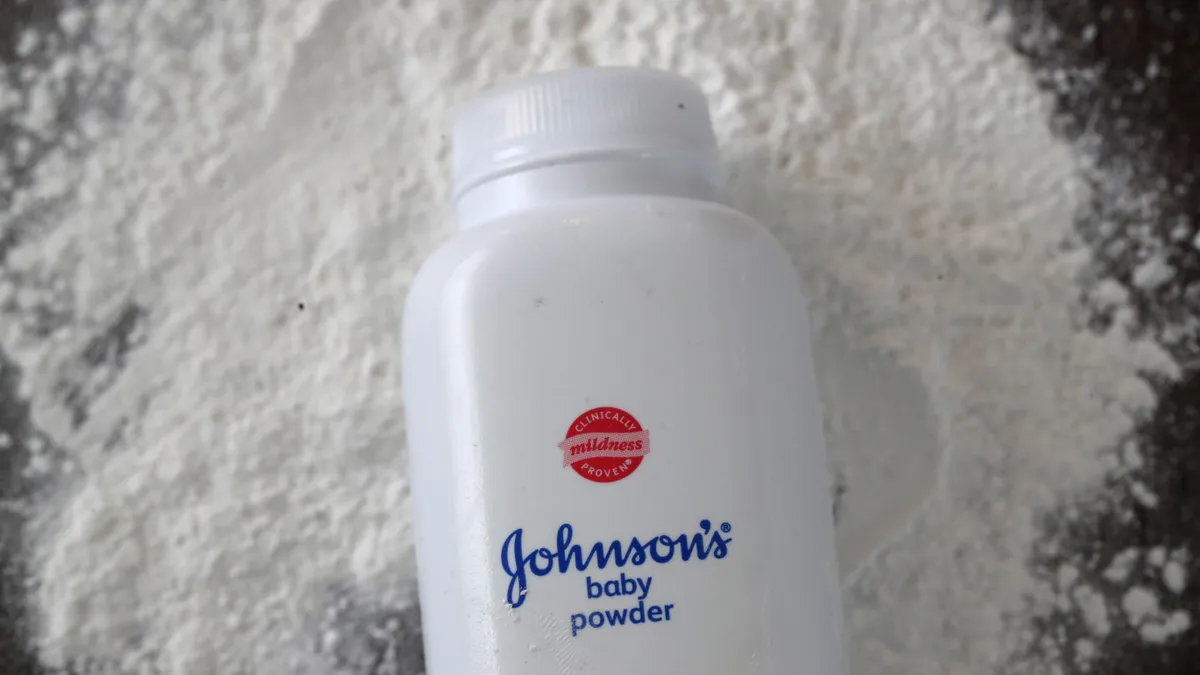Johnson & Johnson’s use of the Texas two-step to put space between it and some 38,000 lawsuits over the alleged cancer risks of its talcum powder wasn’t done in good-faith, the U.S. Court of Appeals for the Third Circuit ruled this week.
The well-known health-products company was hoping to reduce its mass tort liability by handing off the cases to a newly created company, LTL Management, whose bankruptcy filing would stay the lawsuits and let it settle with the claimants under Chapter 11.
The maneuver is called the Texas two-step because it involves a Texas law that allows a company to split itself in two, consolidating its liabilities in one of the companies while keeping the productive assets in the parent company.
A few other companies have used, or are thinking of using, the legal move, making the Johnson & Johnson’s case highly watched. Among the other companies are Koch Industries, whose Georgia Pacific subsidiary used it in 2017, and 3M, which is facing mass tort liability for its combat earplugs.
But the Third Circuit threw cold water on the maneuver, saying LTL couldn’t reorganize under the bankruptcy code because it has virtually unlimited access to the money it needs from the parent company to settle the claims, which shows it’s not financially distressed.
“We start, and stay, with good faith,” Judge Thomas Ambro wrote in the unanimous decision from the three-judge panel. “Good intentions — such as to protect the J&J brand or comprehensively resolve litigation — do not suffice alone. What counts to access the Bankruptcy Code’s safe harbor is to meet its intended purposes. Only a putative debtor in financial distress can do so. LTL was not. Thus we dismiss its petition.”
Liability risk
Since it was hit with its first claim in 2007, Johnson & Johnson has paid out about $2 billion in awards and settlements to consumers who say their cancer was caused by their use of the company’s talc products.
The company, which has won more talc-related cases than it has lost, says the products are safe.
“The claims are premised on the allegation that cosmetic talc causes ovarian cancer and mesothelioma, a position that has been rejected by independent experts, as well as governmental and regulatory bodies, for decades,” the company says.
The company estimates its liability will be around $2 billion over the next two years, but that could go exponentially higher if it were to face all of the claims in court individually.
By its account, processing the claims under bankruptcy protection is a win for both sides, because it means all of the cases can get an equitable settlement within a reasonable period. The alternative would take far longer and, in many cases, claimants could end up with nothing
“We are taking these actions to bring certainty to all parties involved,” Michael Ullmann, Johnson & Johnson’s executive vice president and general counsel, said in a statement.
No financial distress
The appeals court, which was ruling on whether the U.S. Bankruptcy Court in the District of New Jersey was right to dismiss a motion by claimants that the company was acting in bad faith, said the lower court had erred.
Among other things, the bankruptcy court said the parent company’s exposure, just for legal fees if all of the cases went to trial, could be as high as $190 billion, and another $15 billion for the mesothelioma cases. But that analysis assumes no settlements and also ignores Johnson & Johnson’s own record of winning many of the cases and also, for cases it loses, making payouts that are less than what was projected.
“The casualness of the calculations supporting the court’s projections engenders doubt as to whether they were factual findings at all, but instead back-of-the-envelope forecasts of hypothetical worst-case scenarios,” Ambro said in the ruling.
In short, the company isn’t in any imminent danger of becoming financially distressed because of the cases.
“At the time of LTL’s [bankruptcy] filing, J&J had well over $400 billion in equity value with a AAA credit rating and $31 billion just in cash and marketable securities,” the court said. “It distributed over $13 billion to shareholders in each of 2020 and 2021. It is hard to imagine a scenario where [the parent company] would be unable to satisfy their joint obligations under the funding agreement [with LTL].”
For that reason, LTL “cannot show its petition served a valid bankruptcy purpose and was filed in good faith,” the court said, dismissing the chapter 11 filing.
Johnson & Johnson said it would challenge the decision.











